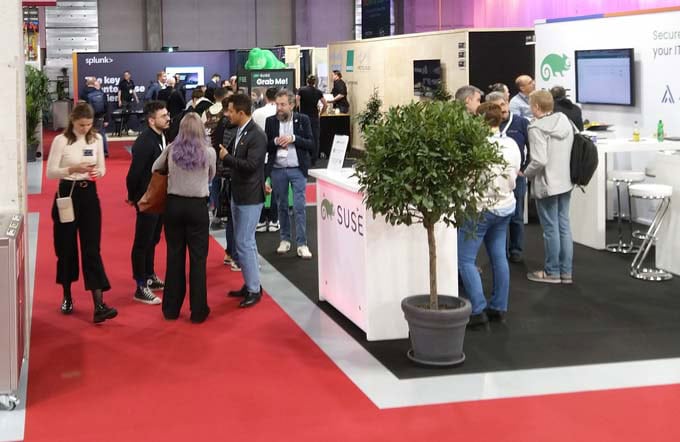Mobile working and security - how companies solve the dilemma
Mobile working opens up new opportunities for companies and their employees, but also harbours a number of risks, as a decentralized IT landscape offers cybercriminals numerous points of attack. Companies can only create a protected working environment with a holistic security architecture that includes all end devices, applications and networks. Dell Technologies explains which aspects are relevant here.

Mobile working means being able to access important company resources at any time and from any location. Such a working environment automatically brings with it a new threat situation: traditional security measures reach their limits when network perimeters become more permeable and numerous new devices are vulnerable. Companies must therefore invest in technologies such as modern endpoint security solutions, zero-trust architectures, resilient cloud strategies, comprehensive contingency plans and AI-based security solutions in order to arm themselves against the ever-growing cyber threats.
- Endpoint security in a distributed landscape. As employees access company resources from different locations and devices, endpoint protection is a crucial aspect of cyber security. Companies need modern endpoint security solutions to protect all devices connected to the company network and close open attack surfaces for cyber criminals. Special detection and response systems help them to identify and mitigate threats across various endpoints. Regular software updates, patch management and device encryption are further key components of a comprehensive security strategy.
- Zero-trust architecture for more cyber security. The traditional approach of trusting entities within the corporate network has proven to be outdated in the face of today's cyber threats. Zero trust architecture assumes that every user and every device inside or outside the corporate network is a security risk. Implementing a zero trust model includes strict access controls, continuous monitoring and multi-factor authentication. By applying a least-privilege approach, organizations can limit user access to only the resources required for their role, minimizing the potential impact of a security breach.
- Cloud security in a flexible working environment. The cloud offers scalability and flexibility, which are essential for mobile working with its communication and collaboration requirements. When employees use cloud services from a wide variety of locations and devices, the underlying infrastructure must be protected accordingly. This includes implementing an identity and access management solution to control and regulate who can access what. Encryption of data both in transit and at rest, regular security checks and compliance monitoring are essential to further improve your own resilience to threats in the cloud.
- Robust emergency response plan. No company is immune to cyber threats. Even if many still hope to get all their data back in the event of a successful attack, the reality is often different: The stolen information is not released even after a ransom is paid. This makes a comprehensive response plan with clear processes, roles and responsibilities all the more important. This is the only way for companies to react appropriately in the event of a security incident - from identification, containment and removal to data recovery and learning from the incident. Regular testing of the response plan and appropriate adjustments ensure its effectiveness. At the same time, companies must develop comprehensive strategies to maintain important business processes in the event of a cyberattack in order to minimize downtime and financial losses.
- AI for an innovative and safe working environment. Artificial intelligence is an effective tool for strengthening cyber defense. It can detect and respond to anomalies almost in real time. By continuously monitoring network activity, attacks can be isolated at an early stage and damage caused by further propagation can be prevented. At the same time, authorizations can be adjusted on the basis of risk assessments. AI-based computers that already have this technology integrated take protection against cyber criminals to a new level, as all the necessary functions are available locally without sensitive data having to leave the computer.
"The future of work is ultra-mobile - but without a holistic approach to security that covers all touchpoints within the IT environment, this future is only seemingly secure. Companies need to invest in technologies that not only enable innovation, but also detect and defend against cyber threats in real time," explains Roland Kunz, Principal Systems Engineer for Emerging Technologies in EMEA at Dell Technologies. "It's also important to remember that security is not a static state, but an ongoing process - especially in a world where mobile working opens up new avenues and brings challenges."
Source and further information: Dell Technologies









